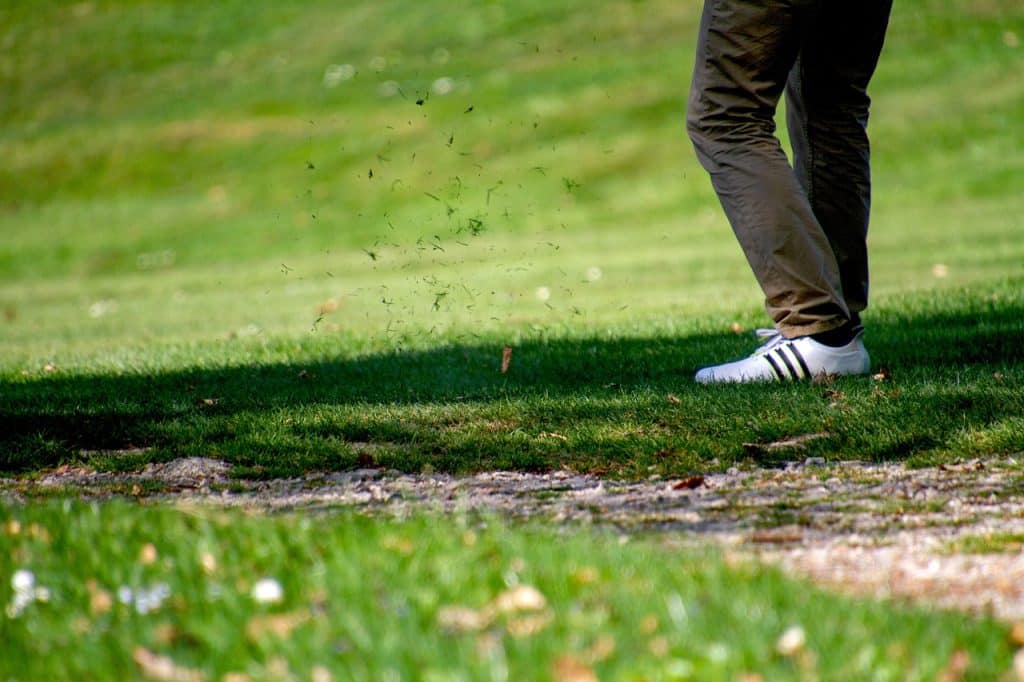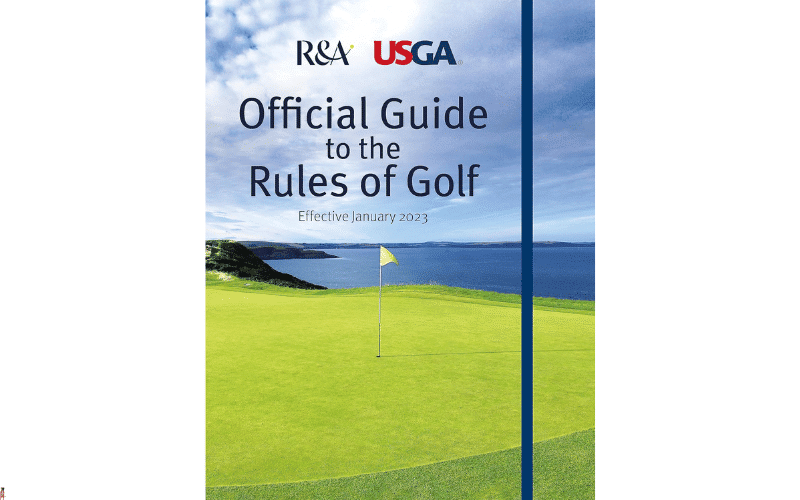Key Takeaways
- Penalty strokes can quickly increase your score, making it essential to avoid them.
- Understanding the rules of golf is crucial to prevent unnecessary penalties.
- Strategic planning and shot execution can help you steer clear of hazards.
- Accurate distance measurement and proper club selection are vital.
- Practicing safe ball placement and correct dropping techniques can save strokes.
Avoid Common Penalty Stroke Mistakes: Tips & Solutions
Immediate Impact of Penalty Strokes on Your Game
Penalty strokes can swiftly derail a good round of golf. These unwelcome additions to your scorecard often stem from errant shots into water, out-of-bounds areas, or other hazards.
However, with strategic planning and a disciplined approach, you can significantly reduce the number of penalty strokes you incur.
Essential Steps to Avoid Penalty Strokes
Avoiding penalty strokes is one of the quickest ways to lower your score because it means your score isn’t increasing unnecessarily when you’re not actually swinging. Here are some essential steps to help you avoid penalty strokes:
- Know and understand the rules of golf.
- Plan your shots strategically.
- Practice safe ball placement.
- Accurately gauge distances and choose the right club.
Understanding Common Penalty Stroke Mistakes
Misjudging Distance and Club Selection
One common mistake golfers make is under-clubbing, especially when faced with a shot over a hazard. Misjudging the distance can result in the ball falling short and incurring a penalty. Always ensure you take enough club to clear any obstacles.
- Accurately gauge distances.
- Choose the right club for the shot.
- Address under-clubbing by taking more club than you think you need.
Ignoring Course Hazards
Ignoring course hazards is another frequent mistake. Understanding the layout of the course and identifying potential hazards can help you plan your shots more effectively. Playing away from hazards and identifying safe zones can significantly reduce the likelihood of penalties.
Poor Ball Placement and Dropping Techniques
Incorrect ball placement and dropping techniques can also lead to penalties. It's important to follow the correct procedures for dropping the ball and placing it in a strategic position. Avoiding disadvantageous lies can save you from unnecessary strokes.
Lack of Familiarity with Golf Rules
Lack of familiarity with the rules of golf can result in unintentional penalties. Regularly reviewing the rulebook and learning from professionals can help you stay informed and avoid mistakes. Knowing the rules inside out ensures you make the right decisions on the course.
"Penalty strokes can swiftly derail a good round of golf. These unwelcome additions to your scorecard often stem from errant shots into water, out-of-bounds areas, or other hazards. However, with strategic planning and a disciplined approach, you can significantly reduce the number of penalty strokes you incur."
Next time you play, implement these techniques to improve your game and enjoy a more successful round. With practice and discipline, you can minimize penalty strokes and achieve better scores.
Immediate Impact of Penalty Strokes on Your Game
Increased Score Penalties
Penalty strokes add extra strokes to your score, which can quickly increase your total score. This makes it harder to achieve your target score and can be frustrating. By avoiding penalty strokes, you can keep your score lower and improve your overall performance.
Loss of Momentum and Confidence
Besides increasing your score, penalty strokes can also affect your momentum and confidence. When you incur a penalty stroke, it can disrupt your flow and make it harder to stay focused. This can lead to more mistakes and a downward spiral in your performance.
Essential Steps to Avoid Penalty Strokes
To avoid penalty strokes, you need to be proactive and strategic in your approach. Here are some essential steps to help you:
Know and Understand the Rules of Golf
Knowing and understanding the rules of golf is crucial to avoid unnecessary penalties. Familiarize yourself with the rules and make sure you follow them on the course. This will help you make informed decisions and avoid mistakes that could result in penalties.
By implementing these steps and practicing regularly, you can avoid common penalty stroke mistakes and improve your performance on the golf course. For more details, check out this guide on understanding out-of-bounds rules in golf.
Plan Your Shots
Planning your shots is crucial to avoid penalty strokes. This involves understanding the layout of the course, knowing where the hazards are, and deciding the best path to the hole. By planning ahead, you can make strategic decisions that minimize risk and avoid penalties.
One effective strategy is to play conservatively off the tee. Instead of going for a long drive that might land in a hazard, opt for a shorter, more accurate shot that keeps you in play. This approach can help you avoid trouble and set up easier subsequent shots.
- Study the course layout before you play.
- Identify potential hazards and plan to avoid them.
- Choose safer, more conservative shots when necessary.
Additionally, always have a backup plan. If your initial shot doesn't go as planned, know your options for the next shot to avoid further penalties.
For more tips on avoiding penalties, check out this guide on avoiding penalty strokes. This way, you can stay calm and make the best decision for your game.
By planning your shots and being prepared for different scenarios, you can navigate the course more effectively and reduce the risk of penalty strokes.
Practice Safe Ball Placement
"The correct dropping procedure and strategic ball placement can save you from unnecessary strokes. Avoiding disadvantageous lies is crucial for maintaining a good score."
When you need to drop the ball, make sure you follow the correct procedure. According to the rules of golf, you must drop the ball from knee height and ensure it lands within the designated relief area.
Failing to do this correctly can result in a penalty. For more detailed information, you can read about understanding out-of-bounds rules in golf.
It's also important to place the ball in a strategic position. Avoid dropping the ball in thick rough, near hazards, or on slopes that could make your next shot difficult. Instead, aim for flat, clear areas that give you a good lie and an easier shot.
For more tips on avoiding hazards, check out this guide on understanding out-of-bounds rules in golf.
For example, if you're taking relief from a water hazard, look for a spot that gives you a clear path to the green. This might mean dropping the ball further back to avoid a difficult shot over the hazard.
By practicing safe ball placement and following the correct dropping procedures, you can avoid unnecessary penalties and set yourself up for better shots.

Misjudging Distance and Club Selection
Misjudging distance and choosing the wrong club are common mistakes that can lead to penalty strokes. To avoid these errors, you need to accurately gauge distances and select the right club for each shot.
Accurately Gauge Distances
Accurately gauging distances is essential for making the right club selection. Use a rangefinder or GPS device to measure the distance to your target. This will give you a precise measurement and help you choose the appropriate club.
The Importance of Choosing the Right Club
Choosing the right club is crucial for avoiding penalty strokes. If you're unsure which club to use, consider the distance to your target, the lie of the ball, and any potential hazards.
It's better to take more club than you think you need, as this can help you avoid falling short and landing in a hazard.
For example, if you're faced with a shot over water, take a club that you know will clear the hazard comfortably. Even if you end up slightly long, it's better than landing in the water and incurring a penalty stroke.
Addressing Under-Clubbing
Under-clubbing is a common mistake that can lead to penalty strokes. To address this issue, always take enough club to clear any obstacles. Trust your distance measurements and choose a club that gives you confidence.
For example, TaylorMade SIM Max Irons are known for their reliable distance and accuracy.
By accurately gauging distances and choosing the right club, you can avoid penalty strokes and improve your overall performance on the course.
Ignoring Course Hazards
Ignoring course hazards is a frequent mistake that can result in penalty strokes. To avoid this, you need to understand the layout of the course and identify potential hazards. By doing so, you can plan your shots more effectively and steer clear of trouble.
Understanding the Layout
Understanding the layout of the course is the first step in avoiding hazards. Study the course map before you play and take note of any water hazards, bunkers, and out-of-bounds areas. This knowledge will help you make informed decisions and avoid risky shots.
Playing Away from Hazards
Playing away from hazards is a smart strategy to avoid penalty strokes. Instead of aiming directly at the flag, consider aiming for a safer part of the green or fairway. This approach can help you avoid trouble and keep your ball in play.
For example, if there's a water hazard on the left side of the fairway, aim for the right side to minimize the risk of landing in the water. This conservative approach can save you from unnecessary penalties and keep your score low.
Identifying Safe Zones
Identifying safe zones on the course is another effective strategy. These are areas where you can safely land your ball without risking a penalty stroke. Look for flat, open areas that give you a good lie and an easy shot to the green.
For example, if you're playing a hole with a narrow fairway and thick rough on both sides, aim for the center of the fairway to avoid the rough. This will give you a better chance of hitting the green with your next shot and avoiding penalty strokes.
By understanding the layout of the course, playing away from hazards, and identifying safe zones, you can avoid penalty strokes and improve your performance.
Poor Ball Placement and Dropping Techniques
Incorrect ball placement and dropping techniques can lead to penalties. It's important to follow the correct procedures and place the ball in a strategic position to avoid unnecessary strokes.
Correct Dropping Procedure
The correct dropping procedure involves dropping the ball from knee height and ensuring it lands within the designated relief area. Failing to do this correctly can result in a penalty. Make sure you follow the rules and practice the correct technique to avoid mistakes.
Strategic Ball Placement
Strategic ball placement is crucial for avoiding penalty strokes. When you need to drop the ball, look for a spot that gives you a good lie and an easy shot to the green. Avoid dropping the ball in thick rough, near hazards, or on slopes that could make your next shot difficult.
For example, if you're taking relief from a water hazard, look for a spot that gives you a clear path to the green. This might mean dropping the ball further back to avoid a difficult shot over the hazard.
By following the correct dropping procedures and placing the ball strategically, you can avoid penalty strokes and set yourself up for better shots.
Avoiding Disadvantageous Lies
Avoiding disadvantageous lies is crucial for maintaining a good score. When dropping the ball, make sure to place it in a position that gives you the best chance for your next shot.
Avoid dropping the ball in thick rough, near hazards, or on slopes that could make your next shot difficult. For more tips on improving your game, check out these out of bounds rules in golf.
Instead, aim for flat, clear areas that give you a good lie and an easier shot. This strategic placement can help you avoid unnecessary penalties and set yourself up for better shots. Always take a moment to assess the area and choose the best spot for your drop.
Lack of Familiarity with Golf Rules
Lack of familiarity with golf rules can lead to unintentional penalties. It's important to know and understand the rules to avoid mistakes that could result in penalties.
Regularly reviewing the rulebook and learning from professionals can help you stay informed and make the right decisions on the course.
The Importance of Rule Knowledge
Knowing the rules of golf is crucial for avoiding unnecessary penalties. Familiarize yourself with the rules and make sure you follow them on the course. This will help you make informed decisions and avoid mistakes that could result in penalties.
Understanding the rules also allows you to take advantage of relief options and other benefits that can improve your game. By knowing the rules inside out, you can make the right decisions and avoid unnecessary penalties.
Regularly Review the Rulebook
Regularly reviewing the rulebook is important for staying up-to-date with the rules of golf. The rules can change, and it's important to know the latest updates to avoid penalties. Make it a habit to review the rulebook periodically and refresh your knowledge.
Learning from Professionals
Learning from professionals can also help you understand the rules and avoid penalties. Watch professional golfers and pay attention to how they handle different situations on the course. You can learn a lot from their techniques and strategies, such as understanding out-of-bounds rules in golf.
Additionally, consider taking lessons from a golf instructor. They can provide valuable insights and help you improve your understanding of the rules and your overall game.
Conclusion: Mastering Penalty Situations
Mastering penalty situations requires a combination of rule knowledge, strategic planning, and disciplined execution.
By understanding the common mistakes that lead to penalty strokes and implementing the strategies discussed in this article, you can significantly reduce the number of penalty strokes you incur.
Remember to always plan your shots, practice safe ball placement, and familiarize yourself with the rules of golf. These steps will help you avoid unnecessary penalties and improve your overall performance on the course.
With practice and discipline, you can minimize penalty strokes and achieve better scores. Implement these techniques in your next round and enjoy a more successful and enjoyable game of golf.
- Understand and follow the rules of golf to avoid unnecessary penalties.
- Plan your shots strategically to minimize risk and avoid hazards.
- Practice safe ball placement and correct dropping techniques.
- Accurately gauge distances and choose the right club for each shot.
- Learn from professionals and regularly review the rulebook.
Summary of Key Points
Penalty strokes can quickly increase your score, making it essential to avoid them. Understanding the rules of golf, planning your shots, and practicing safe ball placement are crucial steps to prevent unnecessary penalties.
Accurate distance measurement and proper club selection are also vital. By implementing these strategies, you can reduce the number of penalty strokes and improve your overall performance on the course.
Final Thoughts on Reducing Penalty Strokes
Reducing penalty strokes is one of the quickest ways to lower your score and improve your game.
By understanding the common mistakes that lead to penalty strokes and implementing the strategies discussed in this article, you can significantly reduce the number of penalty strokes you incur.
With practice and discipline, you can minimize penalty strokes and achieve better scores.
FAQs
Here are some frequently asked questions about avoiding penalty stroke mistakes:
What are the most common penalty stroke mistakes?
The most common penalty stroke mistakes include misjudging distance and club selection, ignoring course hazards, poor ball placement and dropping techniques, and lack of familiarity with golf rules. These mistakes can lead to unnecessary penalties and increase your score.
How can I better understand golf rules to avoid penalties?
To better understand golf rules and avoid penalties, regularly review the rulebook, learn from professionals, and take lessons from a golf instructor.
Familiarizing yourself with the rules and staying up-to-date with any changes, such as understanding out of bounds rules, will help you make informed decisions on the course.
What is the best way to avoid hazards on the course?
The best way to avoid hazards on the course is to plan your shots strategically. Study the course layout, identify potential hazards, and aim for safer parts of the green or fairway.
Playing conservatively and having a backup plan can also help you avoid trouble and minimize the risk of penalty strokes.
How can misjudging distance affect my game?
Misjudging distance can lead to choosing the wrong club and falling short of your target, which can result in penalty strokes. To avoid this, use a rangefinder or GPS device to measure distances accurately and choose the appropriate club for each shot.
Taking more club than you think you need can help you clear obstacles and avoid penalties. For more tips on improving your distance and accuracy, check out how the SF1 golf driver can help.


